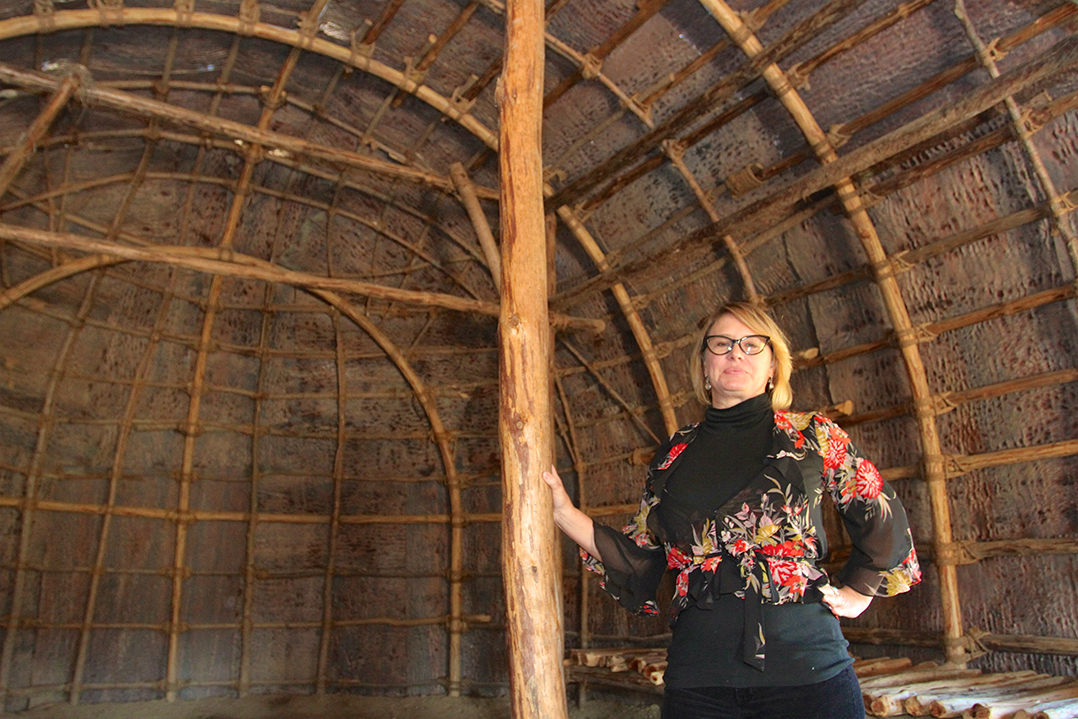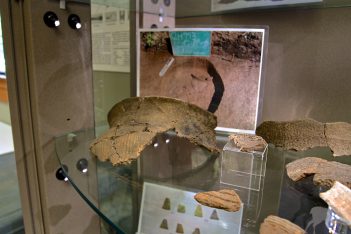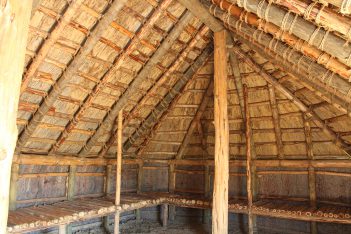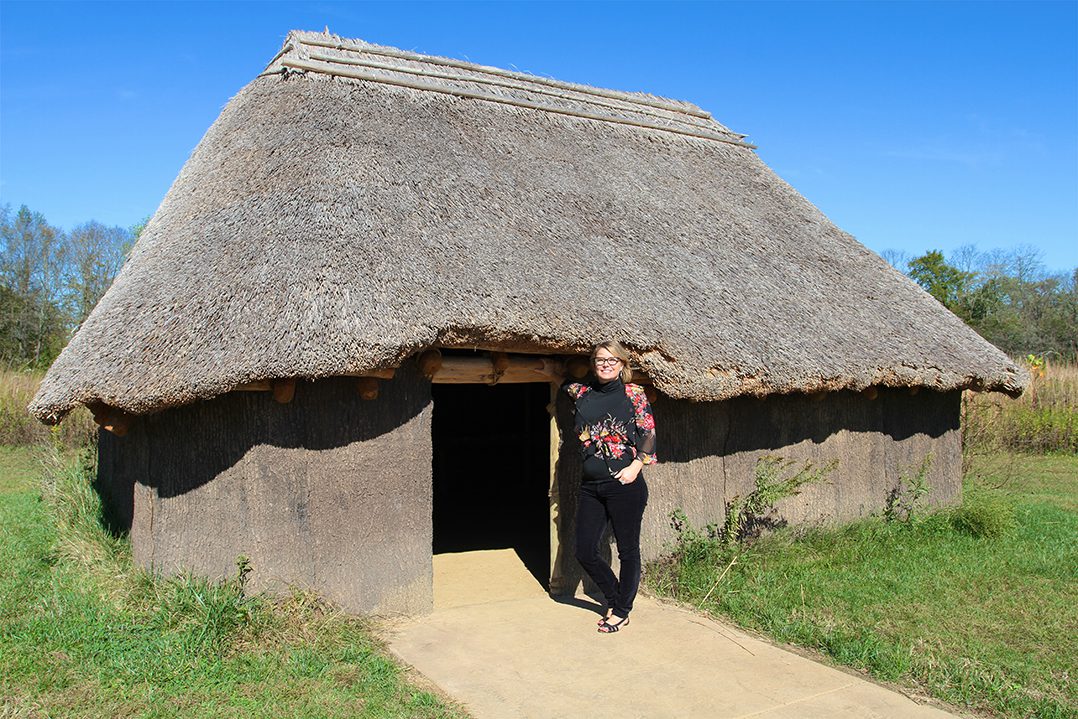
For the past decade, Hamilton County Parks and Recreation has offered area residents a look into the past with its Native American Village tours at Strawtown Koteewi Park in Noblesville.
And in the past year, the department has taken strides to provide guests a more interactive experience with the completion of Koteewi Trace, an interpretive exhibit of Native American structures.

Christy Brocken, who has worked with Hamilton County Parks and Recreation since 2006, and has been its historical resource specialist since 2014, gives Native American Village tours each week at the park.
“We usually start out in our exhibit room and talk about some of the overall history of the park, how the park came to be and the development of the park,” Brocken said. “We talk about the fact that we have now designated over 140 archaeological sites on the property, and then we also have four sites listed on the National Register (of Historic Places). So we highlight that and then talk about some of the things that we’ve learned by doing some of the archaeological investigations on the park.”
Brocken said much of the history of the park focuses on the late-Woodland time period (A.D. 600 to A.D. 1200).
“That’s where most of our archaeological research was done, but we do have artifacts that are representative of virtually every time period in Indiana,” Brocken said. “Some of our earliest artifacts could be as old as 10,500 years old, all the way up to European contact.”
The tours also go through two specific areas of the park.

“We have two sites that are from that late-Woodland time period – the Castor Farms site and the Strawtown Enclosure site,” Brocken said. “There’s one site in particular, the Strawtown Enclosure, that site has been a known village and archaeological site (before this became Strawtown Koteewi Park),” Brocken said. “In fact, Eli Lilly had visited this site in the 1930s, but there were no professional archaeological excavations done on the property.”
In addition to Castor Farms and the Strawtown Enclosure, tours go through the new Koteewi Trace, which features a house and community building modeled after Native American villages in the area during the late-Woodland period.
“We also have a partial stockade wall, a partial ditch that would have gone around one of these sites and a mock excavation that’s made out of concrete,” Brocken said.
Strawtown Koteewi Park no longer permits archaeological excavations. The most recent excavation was done in 2011.
“We do highlight the various artifacts that have been found here, and we try to talk about the best way that we’ve tried to reconstruct some of the pieces of life ways,” Brocken said. “For every artifact we find, we assume five or six more have decomposed, so we’re really only seeing a snapshot. It’s important for us to share what we have learned.”

TAKE THE TOUR
Tours are given every weekend at 11 a.m. Saturdays and 2 p.m. Sundays. Each tour can easily accommodate approximately 20 people, but large groups are asked to call ahead. Anyone is welcome. Here are upcoming tour dates:
- 11 a.m. to noon, Oct. 28
- 2 to 3 p.m., Oct. 29
- 11 a.m. to noon, Nov. 4
- 2 to 3 p.m., Nov. 5
- 11 a.m. to noon, Nov. 11
- 2 to 3 p.m., Nov. 12
- 11 a.m. to noon, Nov. 18
- 2 to 3 p.m., Nov. 19
- 11 a.m. to noon, Nov. 25
- 2 to 3 p.m., Nov. 26
STRAWTOWN KOTEEWI PARK HISTORY
The Delaware tribe inhabited the area after relocating from Ohio around 1795. The Miami Native Americans were said to have lived and traveled in the area. These Native Americans lived off the Strawtown land through fishing, hunting and farming. The first European settlers arrived in the area in 1818 and the Treaty of St. Mary’s called for the natives to vacate their lands by 1821.
In 1823, Hamilton County was created by Indiana state legislators and made up of two townships – Delaware, consisting of the Southern half, and White River, the northern half.
Strawtown is one of the oldest towns in Hamilton County. On July 27, 1836, Bicknell Cole and William Conner recorded the first plat of Strawtown, even though the name had been used prior but did not have any record.
Many settlers came to the area because of the farmland and ease of travel. The first school opened in the winter of 1822 and was a cabin on the Michael French farm, north of Strawtown. Strawtown was a candidate to become the state capitol because the area was highly traveled by settlers.
Approximately 750 acres of the 810-acre park was purchased by Hamilton County in 1999 from the estate of local resident Dan Taylor.


